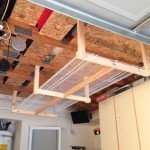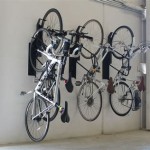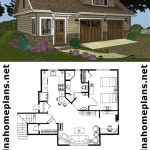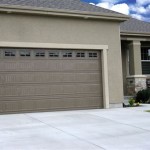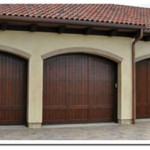Transforming Your Garage into a Functional Home Gym
Establishing a home gym is an appealing prospect for individuals seeking convenient and personalized fitness solutions. The garage, often underutilized, presents an ideal space for such a project. Converting a garage into a home gym requires careful planning and execution to ensure functionality, safety, and longevity. This article will outline key considerations and practical ideas for designing and implementing a garage home gym.
Assessing the Existing Garage Structure
Before commencing any modification, a thorough assessment of the garage's current condition is paramount. This evaluation should encompass several critical aspects, including structural integrity, insulation, ventilation, and available space. The structural integrity of the garage, including the walls, roof, and foundation, must be sound to support the added weight and stress associated with gym equipment. Any existing damage or weaknesses should be addressed before moving forward.
Insulation plays a significant role in maintaining a comfortable workout environment, particularly in regions with extreme temperature fluctuations. A properly insulated garage will help regulate temperature, reducing humidity and mitigating potential mold growth. The level of insulation required will depend on the local climate and the individual's comfort preferences. Options for insulation include fiberglass batts, spray foam, and rigid foam boards. Each material offers varying levels of insulation and ease of installation.
Ventilation is crucial for maintaining air quality and preventing the buildup of moisture, which can lead to mold and mildew. Garages typically lack adequate ventilation, necessitating the installation of exhaust fans or the modification of existing ventilation systems. Cross-ventilation, achieved by opening windows or installing vents on opposite sides of the garage, can also be effective. Factors such as the size of the garage and the frequency of usage will influence the type and capacity of the ventilation system.
Determining the available space accurately is essential for planning the layout and selecting appropriate equipment. Measure the length, width, and height of the garage, and note any obstructions, such as pipes, electrical panels, or structural supports. The height of the ceiling is particularly important if you plan to install tall equipment, such as a weight rack or pull-up bar. Consider creating a scaled floor plan to visualize equipment placement and ensure adequate space for movement and exercise.
Selecting and Installing Appropriate Flooring
The choice of flooring is a crucial consideration in a garage home gym. Standard concrete floors are often cold, hard, and unforgiving, making them unsuitable for many types of exercise. Selecting appropriate flooring not only enhances comfort but also provides protection for both the user and the underlying concrete surface. The flooring must be durable enough to withstand the impact of dropped weights and the wear and tear of regular use. Several flooring options are commonly used in garage gyms, each with its own advantages and disadvantages.
Rubber flooring is a popular choice due to its durability, shock absorption, and ease of installation. Rubber mats are available in various thicknesses and sizes, allowing for customization based on specific needs. They provide a comfortable surface for exercises and help protect the concrete floor from damage. Interlocking rubber tiles are another option, offering a seamless and easily customizable flooring solution.
Foam flooring, often in the form of interlocking tiles, is a more affordable option that provides cushioning and insulation. While not as durable as rubber flooring, foam tiles are suitable for lighter workouts and bodyweight exercises. They are also relatively easy to install and can be easily replaced if damaged. However, foam flooring is more susceptible to tearing and compression under heavy weights.
Epoxy floor coatings provide a durable and aesthetically pleasing finish to concrete floors. Epoxy coatings are resistant to chemicals, stains, and abrasion, making them a good choice for high-traffic areas. While epoxy coatings do not provide significant cushioning, they can be combined with rubber mats or other flooring options to create a comfortable and functional gym surface. Proper preparation of the concrete surface is essential for ensuring a strong and long-lasting epoxy coating.
Installation of any of these flooring systems requires careful preparation of the underlying concrete. The surface must be clean, dry, and free of any loose debris or coatings. Cracks and imperfections should be repaired before installing the flooring. Proper installation is crucial for ensuring the longevity and performance of the flooring system.
Choosing and Arranging Gym Equipment
Selecting the right equipment is the most important step in creating a useful home gym. The choice of equipment should align with the individual's fitness goals, training style, and available space. A well-equipped garage gym can provide a comprehensive workout experience, allowing for a wide range of exercises.
Weightlifting equipment is a cornerstone of many home gyms. Barbells, dumbbells, and weight plates are essential for strength training. A power rack or squat rack provides a safe and effective platform for performing squats, bench presses, and other compound exercises. Adjustable weight benches allow for a variety of exercises and can be easily adjusted to different angles.
Cardiovascular equipment, such as treadmills, stationary bikes, and rowing machines, provides opportunities for aerobic exercise. The choice of cardiovascular equipment will depend on the individual's preferences and fitness goals. Consider the size and noise level of the equipment, as well as its features and functionality. Folding treadmills and elliptical machines are available for those with limited space.
Bodyweight training equipment, such as pull-up bars, dip bars, and resistance bands, provides versatile options for strength and conditioning. Pull-up bars can be mounted to the ceiling or doorframe, while dip bars can be freestanding or attached to a power rack. Resistance bands offer a wide range of exercises and are easily portable.
Proper arrangement of the equipment is essential for maximizing space and ensuring safety. Position heavy equipment, such as weight racks and treadmills, against the walls to minimize obstruction. Leave ample space around equipment for movement and exercise. Consider creating designated zones for different types of workouts, such as weightlifting, cardio, and stretching. The layout should facilitate efficient movement and minimize the risk of injury.
Storage solutions are crucial for keeping the garage gym organized and clutter-free. Weight plate racks, dumbbell racks, and barbell holders help keep equipment organized and easily accessible. Shelves and cabinets can be used to store smaller items, such as resistance bands, jump ropes, and foam rollers. Proper storage not only enhances the aesthetics of the gym but also promotes safety and efficiency.
Addressing Lighting and Electrical Considerations
Adequate lighting is essential for creating a safe and motivating workout environment. Garages often have limited natural light, necessitating the installation of supplemental lighting fixtures. Proper lighting can enhance visibility, improve mood, and reduce the risk of accidents.
Overhead lighting fixtures are a common choice for garage gyms. LED shop lights are energy-efficient and provide bright, uniform illumination. Recessed lighting can be used to create a more aesthetically pleasing look, while track lighting offers adjustable and directional lighting options. Choose lighting fixtures that provide sufficient brightness and coverage for the entire gym area.
Task lighting can be used to illuminate specific areas, such as weightlifting stations or stretching zones. Adjustable floor lamps or clip-on lights can provide focused illumination for detailed exercises. Ensure that task lighting is positioned to minimize glare and shadows.
Electrical considerations are paramount for powering gym equipment and lighting fixtures. Ensure that the garage has sufficient electrical outlets to accommodate the power requirements of all equipment. Consider installing additional outlets if necessary. Consult with a qualified electrician to ensure that the electrical system is safe and up to code. A dedicated circuit breaker for the gym area can prevent overloads and protect equipment from damage.
Proper grounding is essential for preventing electrical shocks. Ensure that all electrical outlets and equipment are properly grounded. Ground fault circuit interrupters (GFCIs) can provide additional protection in wet or damp environments. Inspect electrical cords and connections regularly for damage and replace them as needed.
Enhancing Comfort and Atmosphere
Creating a comfortable and enjoyable workout environment can significantly enhance motivation and adherence to fitness goals. Small adjustments can make a big difference in the overall gym experience. Consider incorporating elements that personalize the space and make it more inviting.
Mirrors are a valuable addition to any home gym. They allow individuals to monitor their form during exercises, ensuring proper technique and preventing injuries. Mirrors also create the illusion of more space, making the gym feel larger and more open. Install mirrors on the walls or use free-standing mirrors to customize the layout.
Entertainment options can help make workouts more enjoyable. Consider installing a television or sound system to provide music, podcasts, or videos during exercise. A Bluetooth speaker can easily connect to mobile devices, allowing for wireless audio streaming. Ensure that the volume level is appropriate and does not disturb neighbors.
Wall décor can enhance the aesthetics of the gym and provide motivation. Motivational posters, artwork, or personal photos can create a personalized and inspiring workout environment. Consider painting the walls in a color that promotes energy and focus. Avoid cluttering the walls with unnecessary decorations.
Climate control is essential for maintaining a comfortable workout environment. Portable air conditioners and space heaters can be used to regulate temperature in the garage. Dehumidifiers can help control humidity levels, preventing mold and mildew growth. Consider installing a ceiling fan to improve air circulation and reduce moisture buildup.
By addressing these considerations and implementing thoughtful design choices, individuals can transform their garages into functional and motivating home gyms, supporting their fitness goals and enhancing their overall well-being.

Creative Diy Garage Gym Ideas To Maximize Your Space Trusscore

I Built My Dream Garage Home Gym

How To Create A Fitness Garage Gym In Your Home Schroeder Design Build

Our New Home Gym Separate Building In Backyard Nesting With Grace

Home Gym In The Garage Bunnings Work Community

How To Turn Your Garage Into A Fitness Room

20 Small Home Gym Ideas And Half Garage Gyms Motive8

Creative Diy Garage Gym Ideas To Maximize Your Space Trusscore

How To Turn Your Garage Into A Fitness Room

Our New Home Gym Separate Building In Backyard Nesting With Grace
Related Posts


